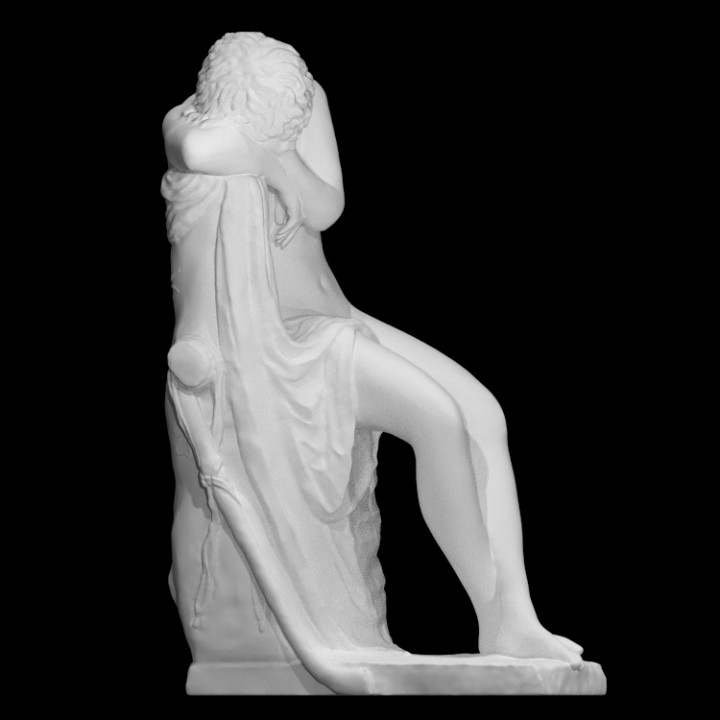
Sleeping Endymion
myminifactory
Aristodemo Costoli quickly rose to success after studying at the Accademia di Belle Arti in Florence. In the early 1820s, he traveled to Rome to work on the Statue of Menoeceus, the Son of Creon, which was first exhibited in 1830 with great acclaim. According to Dr Elena Marconi's archival research, Costoli initially modeled a plaster version of the Sleeping Endymion during his time at the Accademia and showcased it at the institute's annual exhibition in 1825. Further correspondence between Costoli and the Academy suggests that he was eager to obtain a high-quality marble block to sculpt the marble version of Endymion, with an interested buyer already waiting for the finished piece but unfortunately unknown. Stylistically and iconographically, the sculpture fits seamlessly into the sculptor's oeuvre as well as the period in which it was conceived. The short curls on the strands of hair are reminiscent of a figure on the left side of the monument to Guido Alberto in Santa Maria del Fiore a Lapo in Florence (op. cit., figs. 55 and 56); and similarly, an angel on the Monument to Henrietta Sanford (op. cit., fig. 34). The subject of Endymion Sleeping was extremely popular in Italy during the Neoclassical period, with Antonio Canova's The Sleeping Endymion at Chatsworth House being perhaps the most famous example. In Greek mythology, Endymion was a handsome Aeolianshepherd, hunter, or king who ruled and lived at Olympia in Elis. He was also venerated and said to reside on Mount Latmus in Caria, on the west coast of Asia Minor. There is confusion over Endymion's correct identity as some sources suggest he was the prince of Elis while others claim he was a shepherd from Caria. Some later research suggests that Endymion might have been an astronomer: Pliny the Elder mentions Endymion as the first human to observe the movements of the moon, which according to him explains why Endymion fell in love. This has led to two attributed burial sites for Endymion - Heracleia ad Latmo and Olympia.
With this file you will be able to print Sleeping Endymion with your 3D printer. Click on the button and save the file on your computer to work, edit or customize your design. You can also find more 3D designs for printers on Sleeping Endymion.
